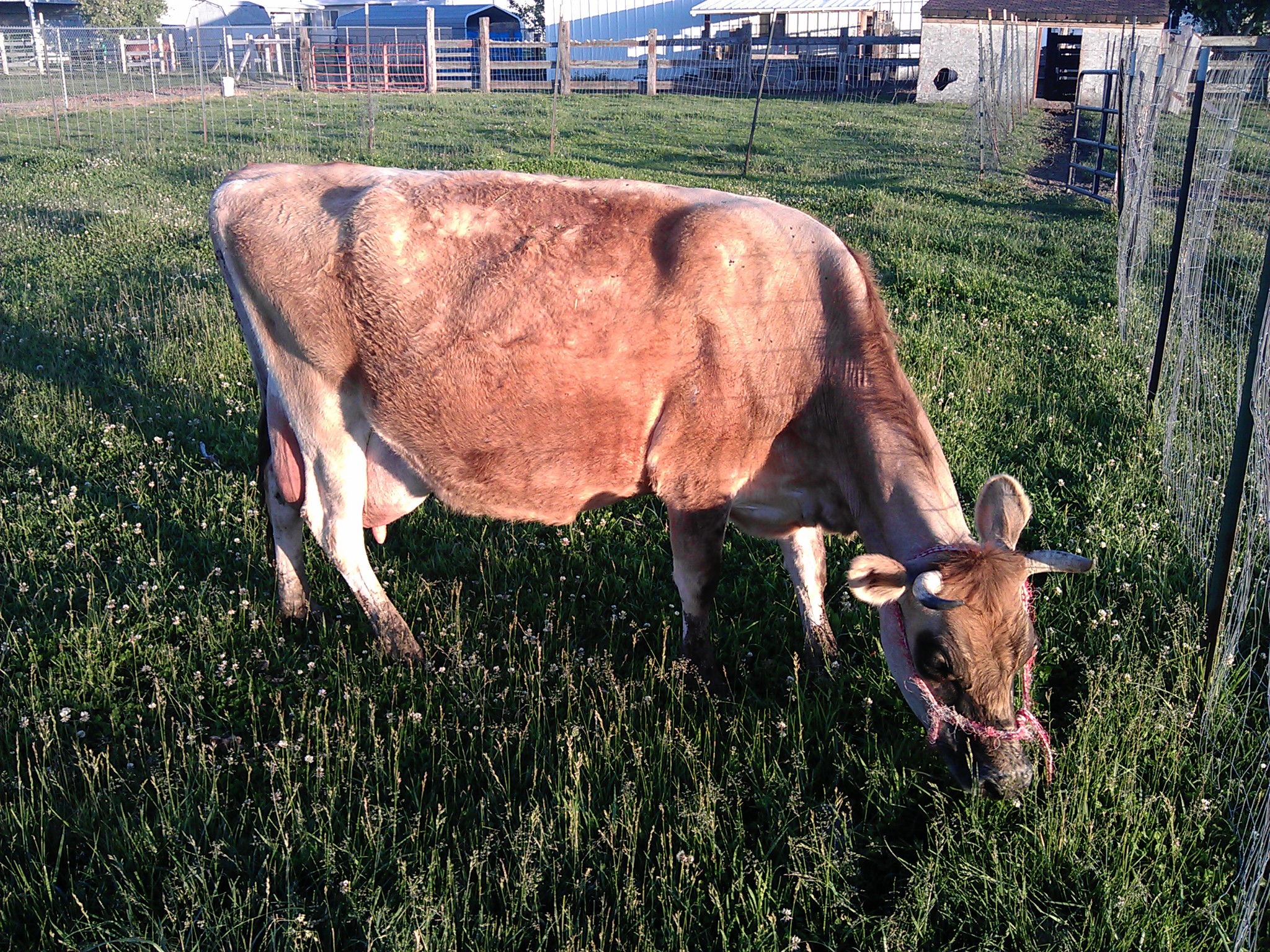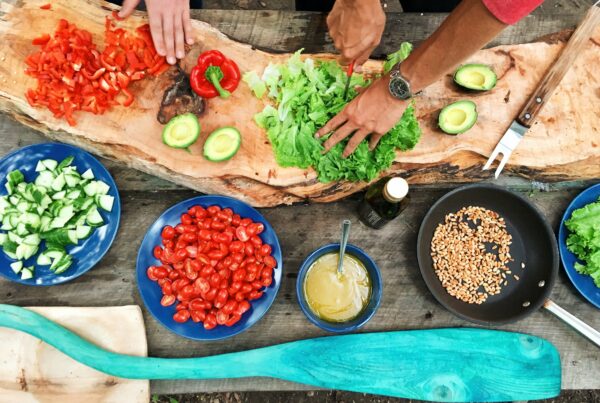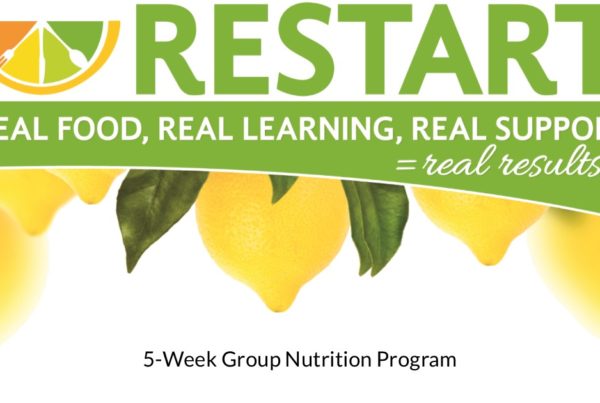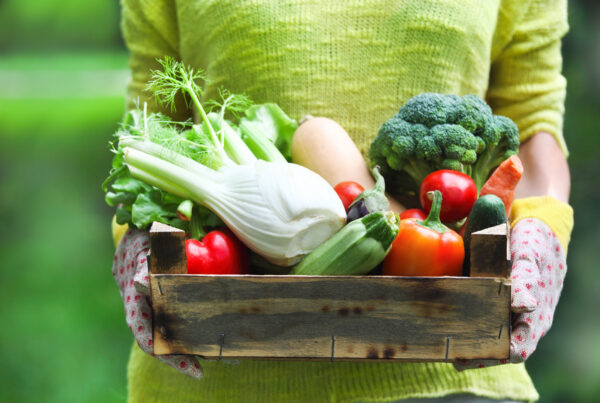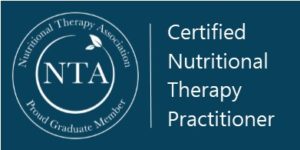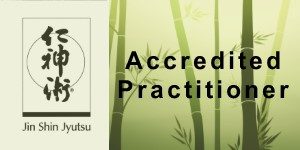This is a guest post by Caralee Ayre, Layton, Utah Chapter Leader for the Weston A. Price Foundation. Weston A. Price Foundation is a nonprofit, tax-exempt nutrition education foundation. Read our mission statement. . . Become a member and receive our lively and informative quarterly journal. Click here for a message from Sally Fallon Morell. Read our Dietary Guidelines here.
Caralee is the wife of her wonderfully supportive husband, Josh, and mother of their seven beautiful children, ages 14 years to 18 months. She discovered and began embracing WAPF principles in 2002, after previously living a vegetarian lifestyle for twelve years that left her with some baffling health issues. Sally Fallon’s book, Nourishing Traditions: The Cookbook that Challenges Politically Correct Nutrition and the Diet Dictocrats, changed her life and her health, as she has been passionate about learning and incorporating WAPF principles into her family’s diet ever since reading it. Her health challenges have since been overcome which she can only attribute to a deeper understanding of and putting into practice those nutritional principles taught by WAPF. She and her husband have worked hard and sacrificed much to purchase a home on an acre where they can raise their children on a small family farm, experiencing and benefiting more fully from all she has learned through WAPF. She has been an assistant chapter leader to the Layton WAPF Chapter for the last couple of years and loves to mentor and help others on their quest to achieve more radiant health!
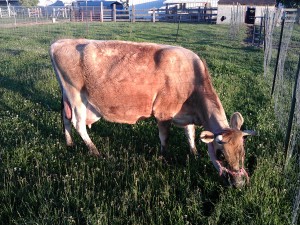 One of Weston A. Price Foundation’s recommendations for achieving optimal health as found in their Dietary Guidelines is to consume “full-fat milk products from pasture-fed cows, preferably raw and/or fermented, such as raw milk, whole yogurt, kefir, cultured butter, whole raw cheeses and fresh and sour cream, and to use animal fats, especially butter, liberally.”
One of Weston A. Price Foundation’s recommendations for achieving optimal health as found in their Dietary Guidelines is to consume “full-fat milk products from pasture-fed cows, preferably raw and/or fermented, such as raw milk, whole yogurt, kefir, cultured butter, whole raw cheeses and fresh and sour cream, and to use animal fats, especially butter, liberally.”
Cows that are pasture fed are producing the most nutritious, most valuable milk right now, as they are dining on the rapidly growing green grass. In Ron Schmid’s book, The Untold Story of Milk, Revised and Updated: The History, Politics and Science of Nature’s Perfect Food: Raw Milk from Pasture-Fed Cows, he discusses the work of Dr. Weston Price found in Nutrition and Physical Degeneration
, specifically the evidence presented that showed healthy primitive people had very high levels of fat-soluble vitamins from certain animal sources in their diets. I quote from his book, page 359, “One of these was a previously unrecognized fat-soluble substance, which plays an essential role in optimal mineral assimilation, bone structure, dental health and growth, and he demonstrated its presence in the butterfat of milk, in fish eggs, and in the organ and fats of grazing animals. He measured the amount of dairy products, and found that the substance (Activator X) was present only in butter from cows eating rapidly growing green grass.”
“Price analyzed over twenty-thousand samples of dairy products from various districts throughout the United States, northwestern Canada, Brazil and New Zealand. The greatest influence on the content of nutrients, including Activator X, ‘…was found to be the pasture fodder of the animals. Rapidly growing green grass, green or rapidly dried, was most efficient.’ These periods of high-vitamin content were more directly related to whether or not the grass was growing rather than to the amount of sunshine or the temperature. In temperate climates, these periods occur in the spring and early fall.”
Activator X (mostly likely the same substance as the animal form of vitamin K, called vitamin K2) along with high amounts of Vitamin A & D found in the whole milk of cows eating rapidly growing green grass is what makes this milk so valuable, not to mention delicious! Dr. Weston Price called whole milk from grass-fed animals “Nature’s only complete diet for mammalian infants and by far the most important single item of food for growing human beings in all periods of stress.”
“He found that primitive races controlled dental caries with diets high in body-building factors which included Activator X. He found significant positive changes in the chemical constituents of the saliva and the growth of L. acidophilus in human subjects that added butter rich in Activator X to the diet. Vitamin K2 contains one of the highest concentrations of vitamin K2, where it is involved in the synthesis of the myelin sheath and other components needed for a healthy nervous system, and it contributes to learning capacity. Dutch researchers found that vitamin K2 protects against the calcification and inflammation of blood vessels and the accumulation of atherosclerotic plaque – that the intake of vitamin K2 is inversely associated with heart disease.
“Vitamins A & D are found in appreciable amounts only if the cows are outside on pasture, as vitamin D comes from sunlight and vitamin A comes from the conversion of carotene in green grass. These two nutrients work synergistically with vitamin K2 – vitamins A & D tell the cells to make certain proteins and then vitamin K activates these proteins after signalling by vitamins A & D.”
Vitamins A & D have a myriad of uses in the body, including mineral metabolism, hormone production, protein metabolism and the health of virtually every organ. They are necessary for calcium metabolism so that the calcium in milk is effectively absorbed and built into the bones and teeth. Another nutrient found in grass-fed ruminant animals, CLA (conjugated linoleic acid), has been shown to play an important role in disease protection, has strong anticancer effects, as well as appearing to have fat-burning and muscle-building characteristics. Only whole milk from cows on grass contains significant amounts of CLA.” (These are excerpts taken from pages 361-364, The Untold Story of Milk by Ron Schmid, which book I highly recommend for much more fascinating and important information about the history, politics, and science of nature’s perfect food: raw milk from pasture-fed cows.)
How do we use this nutritious, delicious milk while it is abundant?
Besides drinking it, pouring it on top of your favorite properly prepared whole grain cereal, or adding it to your cultured milk or coconut milk smoothie, here’s a list of some of my favorite ways to use grass-fed raw milk.
Raw Milk Cheese (Thanks to my friend Mary Liechty for introducing me to this great recipe!)
- Take 2 gallons of whole raw milk and pour them into a big stainless steel pot.
- Fill the sink up with the hottest water that will come from your tap.
- Put the pot into the hot water and stir off and on until the temperature gets to 90 degrees. you’ll want the temperature to rise slowly. I take the water out and put a lid on the pot and it usually stays at 90* during the whole fermenting process. You’ll want to check every now and then to make sure it stays pretty close to 90*.
- Once the temperature gets to 90*, add one package of Mesophilic direct set (C101) culture and mix well and put the lid back on.
- Then set the timer for 30 to 45 minutes. (The guy that taught me, said if you leave it in 45 minutes, it’s sharper. I didn’t notice a difference.)
- While the milk is fermenting, dissolve a 1/4 table of rennet into a little bit of warm water. (If you have liquid rennet, then put exactly 40 drops into 1/2 cup of cold water.)
- When the 30 minutes are up, add the rennet, mix well, return lid, and let it go another 30 to 45 minutes.
- After 30 to 45 minutes, it should be a little thicker than yogurt and enough so that you can make a clean cut. Take a knife and slice vertically and horizontally, making about 1-inch squares. Then take your knife diagonally and slice it underneath. This doesn’t need to be perfect. Then fill your sink back up with hot water and stir the curds until the temperature reaches 100* – 110* (I keep it at 100* to protect the proteins). This is called cooking the curds.
- After you reach 100*, strain your cheese curds into a cheese cloth. I save the whey, of course, and use it to soak grain.
- Tie the top of the cloth and hang it from your faucet, and let it drip for 1 hour. After the hour, cut the cheese curds into 1/2 to 1-inch squares, put them into a bowl and add 2 tablespoons of Real Salt or other high quality unrefined salt (Himalayan Pink Salt is delicious!) and stir. (Use less salt if you don’t like it that salty.) We love cheese curds, so we just refrigerate and enjoy.
If you want to make a hard cheese, you need to buy a mold and a press and go from there. It takes about two days to press the cheese and more time to age the cheese.
The cultures and rennet can be purchased at Real Foods in Orem, or Union Station Fermentation in Ogden on 25th Street (801-392-9772) or from Cultures for Health.
Homemade Raw Milk Yogurt
Sarah Pope, AKA the Healthy Home Economist, is one of my favorite WAPF bloggers and I look forward to her daily posts. She has put together many informative videos and posted them on her blog. One of those is Raw Yogurt (Made in the Microwave) – no, not WITH your microwave – that is one of those appliances that should not be used to cook food!, but it happens to be a great place to let the yogurt incubate.
Homemade Butter
Here’s another video post from Sarah on How to Make Raw Butter.
Homemade Ice Cream
Check out Sally Fallon’s delicious homemade ice cream recipes in her book, Nourishing Traditions on pages 550 & 551.
Try a Raw Milk Fast
So it’s obvious by now that I really appreciate Sarah Pope and refer to her blog often! She truly is an incredible resource, and I hope you all go and explore her blog. Here she embarks on a 10-day fast with raw milk, and you can read the reasons and results for yourself in her The Milk Cure 2012 post.
I was so inspired that I started my own raw milk fast last Saturday, and I cannot believe how great I have felt since being on it! I have consumed approximately 2 1/2 quarts of pasture-fed milk each day – nothing else besides some water, and I have not felt hungry or deprived in the slightest. I’m thinking of doing it each Spring, as a way to gently cleanse my body while still nourishing it.
Where to find milk locally from pasture-fed cows.
If you don’t happen to have a Jersey in your back pasture, fortunately there are a number of places in Utah where you can purchase high-quality, grass-fed milk.
C-2 Farms – 435-469-9161. They have pickup locations in Pleasant Grove, West Jordan, and Huntington. you must pre-order milk before pickup.
Real Foods – see their website at RealFoodsMarket.com for phone numbers. They have stores in Orem, Heber City, and St. George.
Green Pasture Products produces high-quality high vitamin butter oil so that we can get all the benefits of Activator X and vitamins A & D all year round, even when we are not able to purchase local whole raw milk from grass fed cows. I also highly recommend their high vitamin fermented cod liver oil. Ask your local WAPF chapter leader for more details!
Learn about real nutrition, join The Weston A. Price Foundation.

